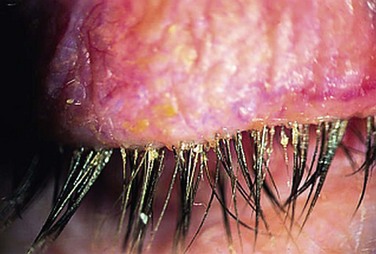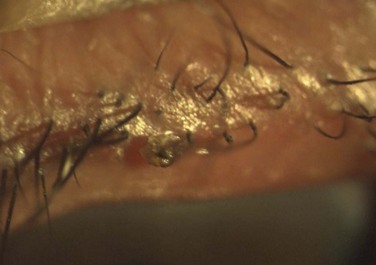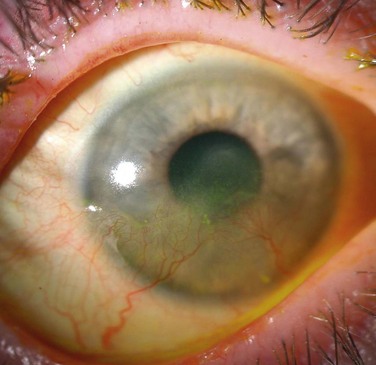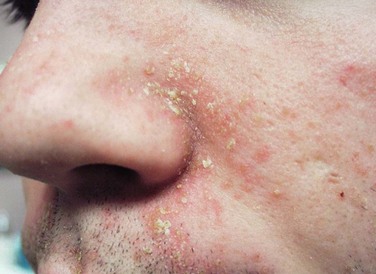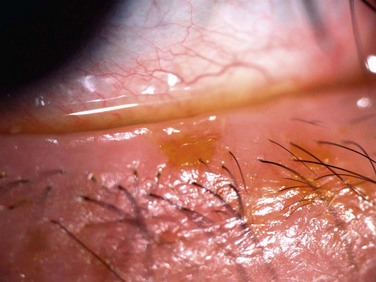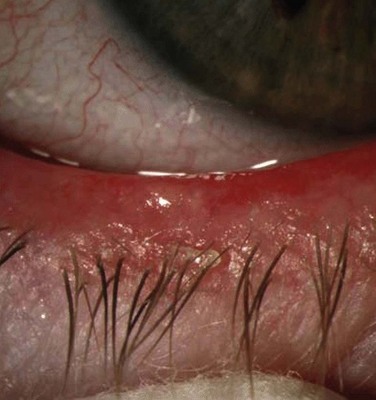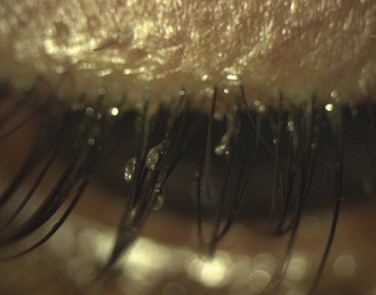9 Blepharitis is one of the most common ocular disorders seen by eye care specialists and is found in almost 47% of ophthalmic patients. Approximately 30 million Americans may be affected.1 Blepharitis is common in middle-aged patients, and its incidence increases with age. Blepharitis may be under-reported as the primary reason for an office visit, since the patient may present for a dry eye assessment, surgical evaluation or routine examination.2 Although common, blepharitis is often overlooked, misdiagnosed or inadequately treated. The lack of diagnosis may be due to poor understanding of the condition and the absence of a widely accepted definition and classification scheme, as well as the lack of a clinically straightforward algorithm to aid in the diagnosis and treatment of blepharitis. Recently, diagnostic and treatment algorithms for practitioners have been developed. A simplified clinically relevant terminology based on anatomic location is key to improve diagnosis and management.3 Anterior blepharitis refers to acute or chronic inflammation and its associated signs and symptoms involving the anterior portion of the eyelid (eyelashes and follicles) (Fig. 9.1).1 In one study, anterior blepharitis was found to account for 12% of all eyecare patients seeking treatment for generalized ocular discomfort or irritation.4 Unlike posterior blepharitis, which primarily involves the meibomian glands, anterior blepharitis appears to be more common in younger (mean age of 42) and female (80%) patients. A variety of conditions (including age, allergy, immune system problems, hormonal changes, bacteria, rosacea and dermatitis) may contribute to its development.1,5 Anterior blepharitis typically involves an excessive colonization of normal lid bacteria (Staphylococcus aureus, Staphylococcus epidermidis, Corynebacterium, or others) and inflammation.1,3,6–7 Infection occurs at the origins of the eyelashes and involves the follicles and surrounding tissues.5 Bacteria elaborate virulence factors including toxins, enzymes, and waste products that enter the tear film and contribute to ocular surface inflammation and irritation.5,8 Lipolytic exoenzymes produced by the lid bacteria hydrolyze wax and sterol esters release irritating free fatty acids.3 These breakdown products can contribute to the disruption of tear film integrity.5,8 Diagnosis of anterior blepharitis is typically based on signs, symptoms, history, and external/lid examination. Typically bilateral, anterior blepharitis is both chronic and intermittent and can significantly impact quality of life.1 In its acute phase, patients often present with bright red, puffy, irritated eyes that itch or burn.3 Additional signs include lid and lash debris, watery eyes, and intermittent effects on vision. Staphylococcal-related anterior blepharitis affects predominantly young to middle-aged women, and keratoconjunctivitis sicca (dry eye) can present in up to 50% of these patients6,8 Eyelash loss or breakage and misdirection, collarettes or scurf on the eyelids and lashes, and fine eyelid ulcerations along the lash margin can also be seen (Fig. 9.2).8 In severe cases, staphylococcal hypersensitivity syndrome may cause ocular surface inflammation, corneal neovascularization and scarring, and decreased vision (Fig. 9.3). Seborrhea-related disease generally affects older patients and is indiscriminate of gender.6,9 Aqueous tear deficiency can be seen in 25% to 40% of these patients.8 Seborrheic dermatitis is a skin condition associated with flaking and scaling, involving the eyebrows and eyelids (Fig. 9.4). The cause of this skin condition is not well understood. Seborrhea sometimes appears in patients with weakened immune systems. Fungi or certain types of yeast that feed on lipids in the skin may also contribute to seborrheic dermatitis with accompanying blepharitis. A thorough history and comprehensive eye examination is critical to confirming a diagnosis. Patient history can help, as the presence of underlying skin conditions such as seborrheic dermatitis or atopic eczema may point to the diagnosis of seborrheic disease.8 Clinicians should look for signs of both infection and inflammation. The differential diagnosis can be confounded by similar conditions with other etiologies, and includes infectious, inflammatory, and seborrheic etiologies.10 Infectious etiologies include staphylococcal and other bacteria, herpes simplex virus (Fig. 9.5), Demodex (Figs 9.6 and 9.7) and Phthrisis pubis (Fig. 9.8). Rosacea-related anterior blepharitis is primarily inflammatory but is often associated with bacterial overgrowth as well. Rosacea-related disease, if untreated or inadequately treated, may lead to severe corneal neovascularization and scarring with resultant poor vision (Fig. 9.9). Anterior blepharitis is also found in patients with seborrhea.
Anterior Blepharitis
Treatment Strategies
Introduction
Clinical Presentation and Diagnosis
Anterior Blepharitis: Treatment Strategies

